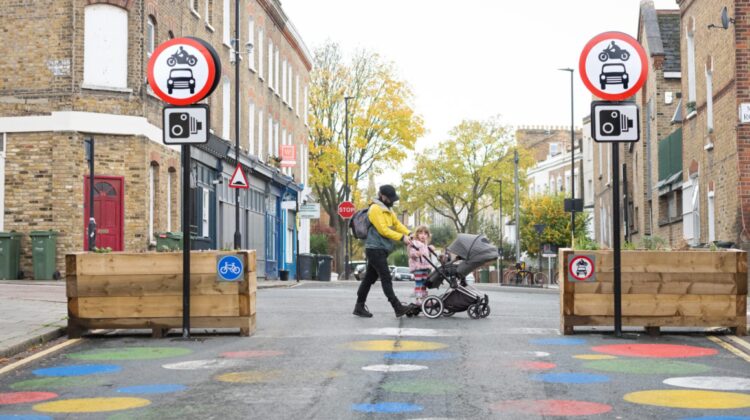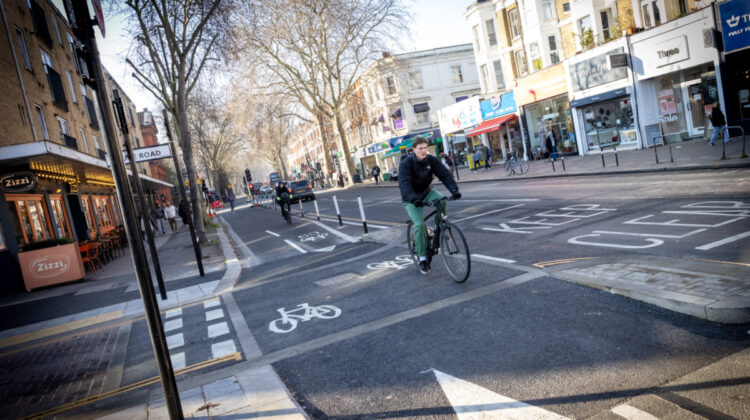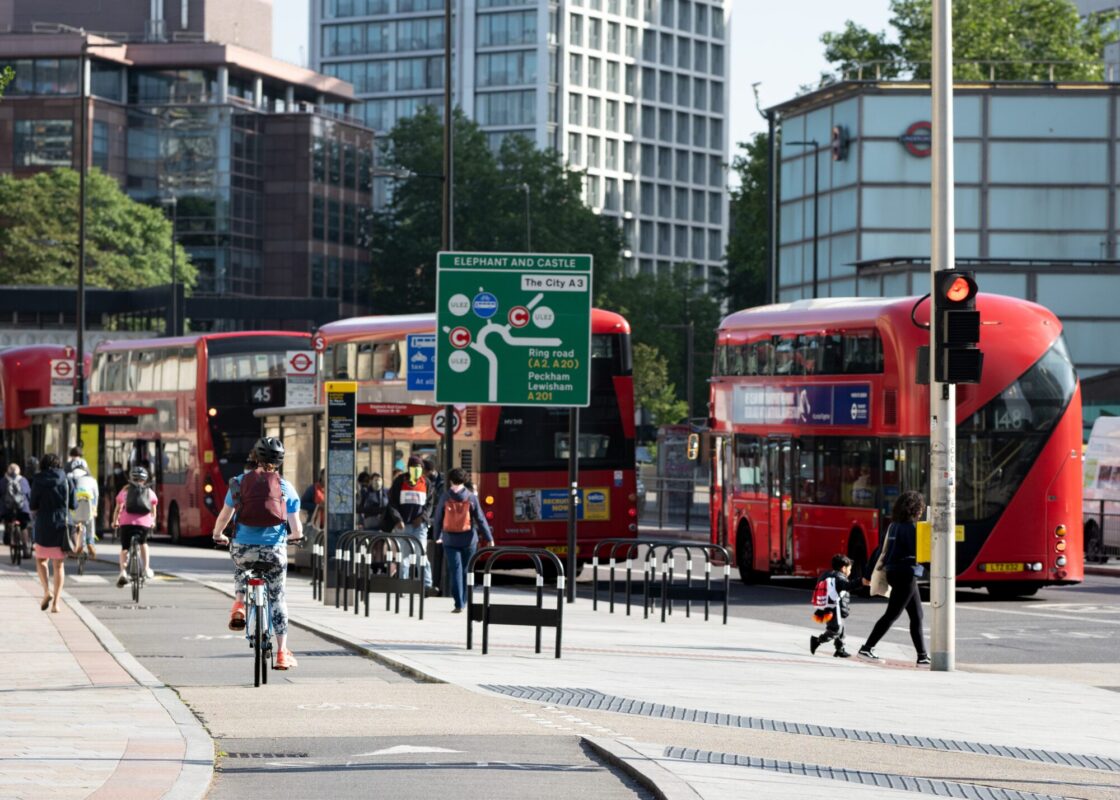Transport for London (TfL) has today (Monday 27 March) allocated more than £63m in funding for London’s boroughs in 2023/24, with more to follow in 2024/25, as they continue their vital work making the capital’s roads safer and more attractive for people using public transport, walking and cycling.
Healthy Streets investment in boroughs provides funding for local projects that support the Mayor’s Transport Strategy and local priorities. These include improved public transport, schemes that support the Mayor’s Vision Zero goal of eliminating death and serious injury from the transport network and opportunities for safe and active travel in local communities. TfL’s LIP allocation funding will support boroughs to deliver new cycle routes, school streets schemes, new or upgraded pedestrian crossings, bus priority schemes and 20mph speed limits on borough roads. Enabling more people to walk, cycle and access public transport is vital to a healthier and more sustainable city for all Londoners.
TfL has now allocated funding for the next financial year (2023/24), which will see nearly £39m allocated to outer London boroughs, including £4m to Barking and Dagenham, £1.8m to Hounslow, £2.5m to Hillingdon and nearly £2m to Sutton. £24m has also allocated to inner London boroughs, including nearly £1.9m to Islington and nearly £2.3m to Newham. Confirming this means that the boroughs now have certainty of funding and can look to progress their plans as efficiently as possible. The £63m allocated to boroughs is the latest allocation of the £138m made available to boroughs as part TfL’s funding deal with Government last year. Boroughs have already invested £59m in vital schemes improving access to walking, cycling and public transport.

Following extensive engagement with the boroughs, bus priority schemes will be funded, including the delivery of new bus lanes across London. More than 90 of the funded bus priority schemes are planned in outer London boroughs. These will help make bus services more reliable and attractive as an alternative to the car and contribute to London’s target of building 25km of new bus lanes by March 2025.
Bus priority schemes receiving funding across London include:
- Funding for LB Newham to complete the construction of a bus priority scheme on the approaches to the junction of Prince Regent Lane and Tollgate Road, including the provision of approximately 600m of new bus lane
- Funding for LB Richmond upon Thames to undertake consultation on the conversion of Hail and Ride sections on route 419 to fixed stops
- Funding for LB Barking and Dagenham to complete construction of a bus priority scheme on Wood Lane, introducing 250m of new bus lane and upgrading the existing traffic signals
London’s boroughs have also been developing proposals on a number of additional schemes which the allocations will allow to progress. These include:
- Junction and corridor improvement schemes that will make London’s streets safer, better for active travel and more reliable for buses
- Five Liveable Neighbourhood schemes in Holborn (Camden), West Ealing (Ealing), Enfield Town (Enfield), Greenwich Town Centre (RB of Greenwich) and Coppermill Village (Waltham Forest)
- More than 150 proposals for new or upgraded pedestrian crossings
- Cycle training for more than 20,000 adults and 40,000 children
- More than 3,500 secure residential cycle parking spaces
Specifically in outer London, this funding will help deliver a range of improvements to help support more active travel and support the expansion of the Ultra Low Emission Zone across London on 29 August. These include working with boroughs to introduce more 20mph speed limits on their road networks, as well as continuing a rollout of School Streets across Barking, Brent, Ealing, Hounslow, Redbridge, Richmond, and Waltham Forest, and more than 50 feasibility schemes for new cycle routes.

TfL will also continue to work with the boroughs to expand London’s cycle network at pace, aiming for 70 per cent of Londoners to live within 400m of the network by 2041. Boroughs are vital partners in this endeavour and this round of funding will enable them to deliver new routes across London, including between Colliers Wood and Sutton, between Leyton and Lea Bridge, between Ealing and Greenford and between Enfield Town and Broxbourne.
In addition, last year, following funding negotiations with Government, TfL also announced it would be resuming spending on vital projects, with £80m per year to be spent on London’s roads through TfL led schemes on walking and cycling as part of its Healthy Streets Programme. This includes the start of construction of safer junction schemes at Holloway Road/Drayton Park and Lambeth Bridge, pedestrian and cycling improvements at Streatham High Road and Manor Circus in Richmond, and a further section of Cycleway 9 to connect the cycleway in Watermans Park to Brentford.
Walking and Cycling Commissioner Will Norman said:
“I am delighted that we have been able to award London’s Boroughs with more than £63million in funding to make our streets healthier and safer. The funding will give boroughs the certainty to deliver improvements to public transport, support Vision Zero and make active travel safer and more appealing.
“The funding will also support more active travel in outer London and help Londoners prepare for expansion of the Ultra Low Emission Zone. Boroughs have an essential role to play as we continue to build a safer, greener London for everyone and the Mayor and I will continue to work closely with them.”
Alex Williams, Chief Customer and Strategy Officer at TfL, said:
“London’s boroughs are at the centre of our plans to transform access to walking, cycling and public transport and the Local Implementation Plan programme is vital in providing more localised investment in bus priority, walking and cycling schemes across the city. This investment will deliver benefits, especially in outer London and plays a huge role in our determination to provide a green, healthy and sustainable future for all Londoners. We look forward to working closely with the boroughs to deliver projects that make our city greener, safer and better for everyone.”
Mayor Philip Glanville, London Councils’ Executive Member for Climate Change, Transport and Environment, says:
“London boroughs are championing active travel solutions for Londoners and are already making changes on the ground to increase healthier and greener travel options across the capital. It is essential that all of London’s diverse communities can benefit from the projects that each borough’s Local Implementation Plan programme will deliver. We are committed to a strong partnership with TfL to deliver on this ambition, recognising that 95 per cent of London’s streets are managed by the boroughs and City of London.
“This funding is hugely welcome as a starting point, but we will continue to work with Government to address the funding backlog to improve London’s highways infrastructure, including cycle routes, footpaths, lighting, trees, gullies, bridges and tunnels. Our soon to be launched State of the City Report has revealed this backlog now surpasses £1.5bn.
“We look forward to working alongside TfL and government to make sure active travel is a sustainable and viable option for all Londoners wanting to make greener choices for themselves and for London’s green future.”
For more information please visit Transport for London or contact their press office via phone 0343 222 4141 or email pressoffice@tfl.gov.uk.

